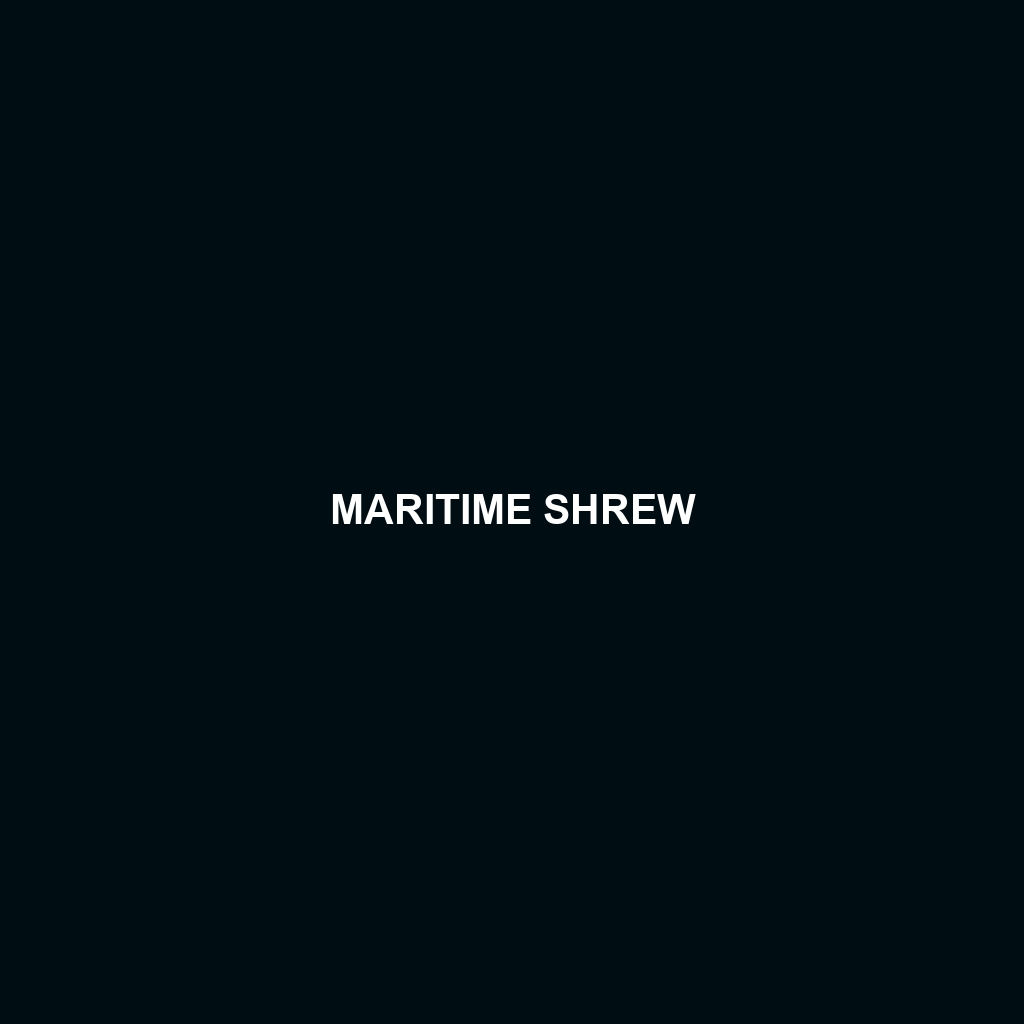Species Description: Maritime Shrew
Common Name: Maritime Shrew
Scientific Name: Sorex maritimensis
Habitat: The Maritime Shrew is primarily found in coastal regions of the northeastern United States, particularly in habitats such as salt marshes, estuaries, and coastal grasslands. This species thrives in sandy, moist soils often found along the Atlantic coastline, where it can easily locate its prey and find refuge.
Physical Characteristics: The Maritime Shrew is a small mammal, typically measuring about 6 to 8 inches in length, including a 2 to 3-inch tail. Its fur is dense and soft, with a color range from grayish-brown to dark brown, providing excellent camouflage in its natural habitat. Distinctive features include its elongated snout and small but sharp teeth, adapted for its insectivorous diet. The Maritime Shrew’s compact size and relatively short limbs make it well-suited for its lifestyle.
Behavior: Maritime Shrews are known for their active lifestyle, often foraging during the early morning and late evening. They are proficient swimmers and are often observed in shallow waters. This species is solitary and territorial, using scent markings to establish boundaries. Their high metabolism demands frequent feeding, leading them to be highly mobile and exploratory in search of food.
Diet: The diet of the Maritime Shrew predominantly consists of insects, worms, and other small invertebrates, making it an important predator in coastal ecosystems. They have been observed hunting on land as well as foraging in the water for aquatic larvae and crustaceans, showcasing their adaptability in feeding habits.
Reproduction: Maritime Shrews typically breed in late spring to early summer, with females giving birth to litters of 3 to 7 young after a gestation period of about 20 to 30 days. The young are born blind and helpless, requiring substantial maternal care. Offspring become independent approximately three weeks after birth, and it is not uncommon for females to have up to two litters annually.
Conservation Status: The Maritime Shrew is currently classified as “Vulnerable” by conservation organizations due to habitat loss and environmental changes affecting coastal ecosystems. Preservation of their natural habitats is crucial for the continued survival of this species.
Interesting Facts: One fascinating aspect of the Maritime Shrew is its ability to produce high-frequency vocalizations, which are believed to play a role in social interactions and territory defense. Additionally, their high reproductive rate allows them to quickly establish populations in suitable environments.
Role in Ecosystem: Maritime Shrews play a vital role in their ecosystems as both predators and prey. By controlling insect populations, they help maintain ecological balance. Their presence in coastal habitats also provides food for larger predators such as birds of prey and small mammals, highlighting their importance in food webs.
